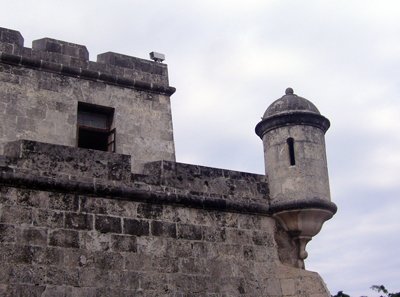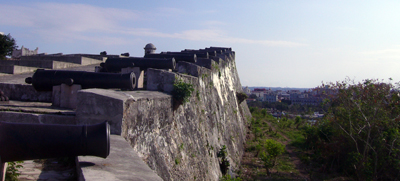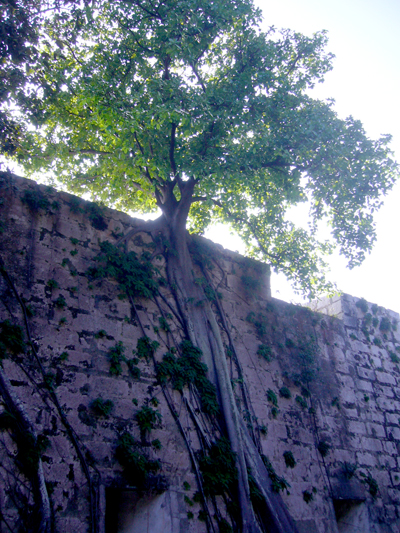anchor
more from Cuba
El Castillo de Atune
A mock-Spanish Colonial fort built in 1941 is the police headquarters for Habana Vieja, the tourist district in Havana. Turrets for riflemen sit next to modern day turrets: CCTV. A wonky antenna tops the castle. The building houses a police force which is trying to keep its own population from dealing illicitly with foreigners. However, I've been solicited for rum, sex, and cigars each within view of the cameras. Even the policeman tried to sell me a pocket-sized calendar with a cheezy photoshopped image of the
bearded one. (It's illegal to sell things to foreigners without a license.)
Ferry to Casablanca
Two Cubans were not allowed to board a ferry I got on today because one of them had a bottle of cider. I had encountered the same problem the day before because I had my leatherman on me--pocket knives , like broken bottles, are dangerous enough to enable someone to hijack a ferry boat. You can guess where the Cubans might divert it. Next time I hear someone complain about our airport baggage regulations, I'm going to tell them this little story.

Like the recent NY Times Magazine article said, the island really is imprisoned by the ocean. However, it paints a pretty grim picture of the Malecon, which is my favorite space in the city. The promenade at the city edge is full of life at night. The crowd is very mixed in age, and it seems to me along much of the length people are hanging out and having a good time. During the day it's pretty desolate, and I find that a welcome and necessary relief from the pumping bumping head thumping life in the city.
Fortaleza de San Carlos de la Cabana
Built between 1764-74 after a brief English occupation of Havana, this massive fortress sits across the harbor from the city and was never used. Is this not a condition we are familiar with all across America? The fearsomeness of this fortress apparently did its job defending the city, dissuading any of the usual cast of imperial characters. That is until Che occupied the fort and established a "military-cultural" academy in the early months of 1959. He was training his combatants to read and write as well as appreciate the arts. He invited Nicolas Guillen and exhibited work by Mexican painter/engraver Arturo Garcia Bustos. (Speaking of Che, does anyone have any information on a speech he gave to architecture students at the University of Habana on May 25th, 1959?)

The fort really is big enough to be a city. I had a wonderful day just exploring all corners of the complex, especially the quiet areas where vegetation was growing over the walls. The fortress was returning to 'nature' in one sense: the smell emanating from the turrets easily diffused any desire to see what the inside is like. As my interest on this trip is looking at post-military space, I do have to consider all the possible uses...








4 Comments
Nick,
Love the stories and pictures
Brian
Nick I sure hope you are enjoying all the cigars and mojitos - they taste so much better whilst you are there
Nice post. I think Habana Cementery could be another place where to go.
b,
finding info on that speech is harder than one would think.
-b
Block this user
Are you sure you want to block this user and hide all related comments throughout the site?
Archinect
This is your first comment on Archinect. Your comment will be visible once approved.